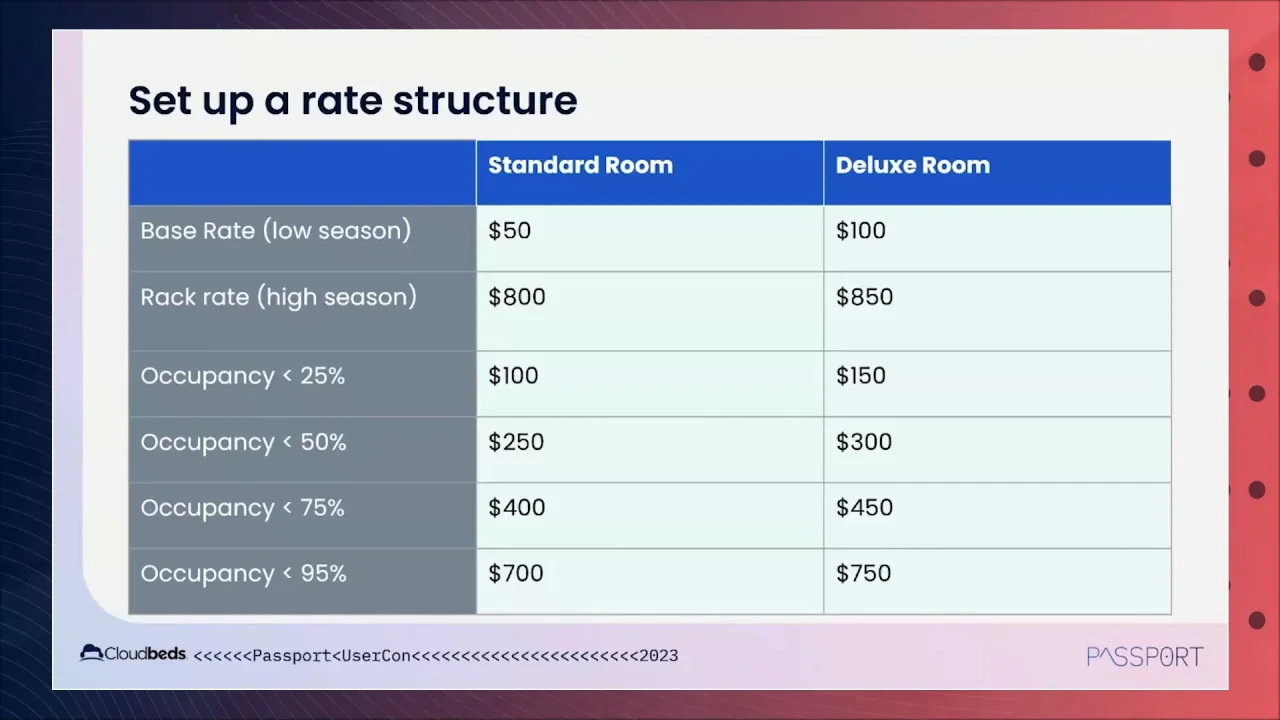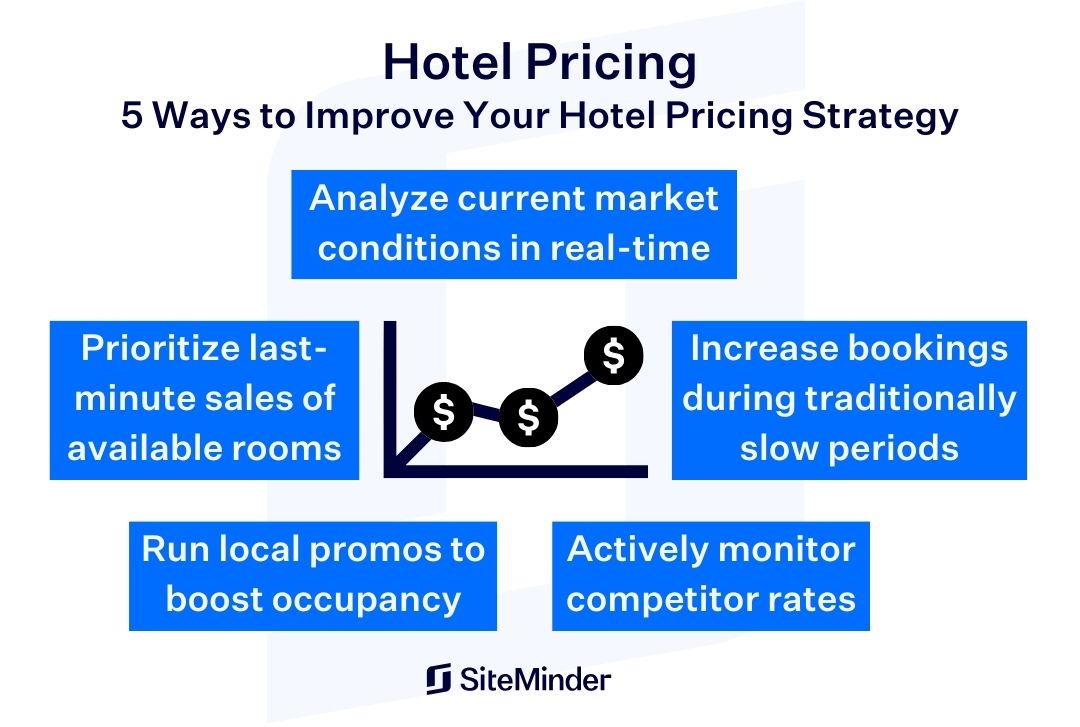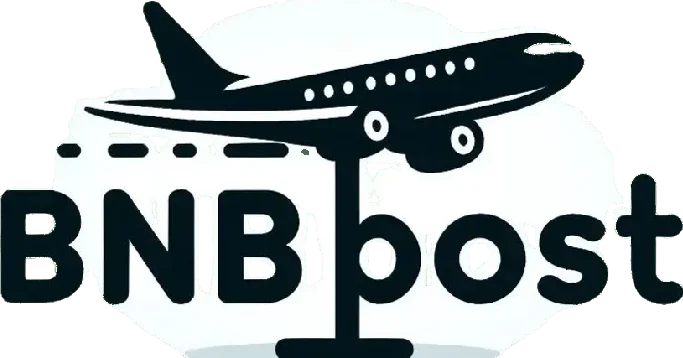To maintain profit margins, set minimum night rates based on expenses and desired profit. This ensures profitability and sustainability.
Setting minimum night rates is a critical aspect of managing a profitable accommodation business. By establishing rates that account for operational costs, desired profit margins, and market competition, you can ensure the financial sustainability of your enterprise. However, it’s essential to strike a balance between competitive pricing and maintaining profitability.
This blog will delve into the factors to consider when setting minimum night rates to optimize your revenue and ensure long-term success in the hospitality industry. Whether you operate a hotel, bed and breakfast, or vacation rental, understanding the intricacies of pricing strategies is crucial for maximizing your profits while providing value to your guests. Let’s explore the key principles that can guide you in setting minimum night rates that align with your business objectives.
:max_bytes(150000):strip_icc()/overnightrate.asp-final-181516f335c34a87ba1f3421e0df538b.png)
Credit: www.investopedia.com
Contents
- 1 The Importance Of Minimum Night Rates
- 2 Analyzing Market Conditions
- 3 Setting Your Rates: A Step-by-step Guide
- 4 Psychological Pricing Strategies
- 5 Communicating Value To Your Guests
- 6 Leveraging Technology For Dynamic Pricing
- 7 Case Studies: Success Stories And Lessons Learned
- 8 Navigating Challenges And Overcoming Obstacles
- 9 Frequently Asked Questions
- 10 Conclusion
The Importance Of Minimum Night Rates
Setting minimum night rates is crucial for maintaining the profitability of your business. It allows you to balance demand and profit, protecting your business model in the long term. By implementing minimum night rates, you can ensure that your property remains financially sustainable, even during periods of fluctuating demand.
Balancing Demand And Profit
When setting minimum night rates, you are effectively striking a balance between meeting customer demand and maximizing your profit margins. By strategically adjusting your rates based on demand trends, you can optimize your revenue without compromising on the value you provide to guests. This approach enables you to capitalize on peak periods while still attracting bookings during off-peak times, ensuring a consistent flow of income throughout the year.
Protecting Your Business Model
Implementing minimum night rates safeguards your business model from potential revenue erosion. It shields your property from the adverse effects of price undercutting and devaluation. By setting a baseline rate, you establish a standard for the value of your accommodations, preventing undercutting practices that can diminish the overall profitability of your business. This protection is especially valuable in competitive markets, where maintaining a strong and consistent pricing strategy is essential for long-term success.
Analyzing Market Conditions
When it comes to setting minimum night rates to maintain profit margins, it is crucial to analyze market conditions. By understanding seasonal trends and competitor pricing strategies, businesses can make informed decisions to optimize their pricing strategy.
Seasonal Trends
Seasonal trends play a significant role in determining the minimum night rates. During peak seasons, such as holidays or summer months, demand for accommodations is typically higher, allowing for higher minimum night rates. Conversely, off-peak seasons may require lower minimum night rates to attract guests and maintain occupancy levels.
Competitor Pricing Strategies
Competitor pricing strategies provide valuable insights into the prevailing market rates. By monitoring competitor prices, businesses can gauge the competitiveness of their own rates and adjust them accordingly. It’s essential to differentiate based on unique value propositions rather than engaging in price wars.
Setting Your Rates: A Step-by-step Guide
Setting the right rates for your vacation rental property can be a challenging task. You want to ensure that your rates are competitive enough to attract guests, but also high enough to maintain profit margins. In this guide, we will provide you with a step-by-step approach to setting your rates, including calculating costs, understanding guest expectations, and leveraging technology for pricing.
Calculating Costs
The first step to setting your rates is to calculate your costs accurately. You need to know your fixed costs, such as mortgage payments, property taxes, and insurance. You also need to consider variable costs, such as utilities, maintenance, and cleaning fees. Once you have a clear understanding of your costs, you can use this information to set a minimum rate that covers your expenses and ensures profitability.
Understanding Guest Expectations
It’s essential to understand what your guests expect from a vacation rental property in terms of pricing and amenities. Look at your competitors’ rates and amenities and compare them to your own. Consider the location of your property and the type of guests you attract. If you’re unsure, you can also ask your previous guests for feedback on your pricing and amenities. Use this information to set rates that are competitive, but also meet your guests’ expectations.
Leveraging Technology For Pricing
Technology can help you set dynamic rates that adjust to market demand and availability. Consider using a pricing tool that takes into account factors such as seasonality, demand, and competition. This will help you optimize your rates and maximize your profits. Additionally, you can use a channel manager to distribute your rates across multiple booking platforms and reach a wider audience.
In conclusion, setting your rates is a crucial aspect of running a profitable vacation rental property. By following these steps, you can ensure that your rates are competitive, cover your costs, and meet your guests’ expectations. Don’t forget to leverage technology to optimize your pricing strategy and reach a wider audience.

Credit: www.cloudbeds.com
Psychological Pricing Strategies
Employing psychological pricing strategies involves setting minimum night rates strategically to uphold profit margins without compromising customer perception or value. This tactic leverages consumer psychology to influence buying behavior, ensuring optimal profitability for businesses in the competitive market landscape.
The Charm Pricing Effect
The Charm Pricing Effect is a popular psychological pricing strategy used by businesses to attract customers. It involves setting prices that end in “9” or “99” instead of rounding up to the nearest whole number. For example, $9.99 instead of $10. This tactic is based on the theory that consumers perceive prices ending in “9” as being significantly cheaper than the next whole number, even though the difference may be minimal.Using this pricing strategy can increase sales and revenue as customers may be more likely to purchase a product or service due to the perceived lower price. The Charm Pricing Effect is commonly used in retail, hospitality, and e-commerce industries.Price Anchoring Techniques
Price Anchoring Techniques involve presenting customers with multiple pricing options, with the highest priced option being the “anchor”. This technique is based on the theory that customers will perceive the other pricing options as being more reasonable in comparison to the anchor price.For example, a hotel may offer three pricing options for a room: $100 per night for the basic room, $150 per night for a room with a view, and $200 per night for a luxury suite. The $200 per night luxury suite acts as the anchor, making the $150 per night room with a view seem like a good deal in comparison.Using price anchoring techniques can increase sales of higher-priced options as customers may be more likely to choose a mid-range option after seeing the high anchor price.In conclusion, understanding and implementing psychological pricing strategies such as the Charm Pricing Effect and Price Anchoring Techniques can be effective in maintaining profit margins by influencing customer behavior and increasing sales.Communicating Value To Your Guests
When it comes to setting minimum night rates for your hotel, it’s essential to effectively communicate the value your guests will receive. By highlighting your unique offerings and creating a compelling value proposition, you can attract customers who are willing to pay higher rates for the exceptional experience you provide.
Creating A Value Proposition
A value proposition is a concise statement that outlines the benefits and value guests can expect when choosing your hotel. It should clearly communicate what sets your property apart from the competition and why guests should choose to stay with you.
Here are some key elements to consider when creating your value proposition:
- Identify your target audience and understand their needs and desires.
- Highlight the unique features and amenities your hotel offers.
- Emphasize any special services or experiences that differentiate your property.
- Showcase positive guest reviews and testimonials to build trust.
By crafting a value proposition that resonates with your target audience, you can effectively communicate the value they will receive by staying at your hotel.
Marketing Your Unique Offerings
Once you have defined your value proposition, it’s crucial to market your unique offerings to attract potential guests. Here are some strategies to effectively market your hotel:
- Create a visually appealing and user-friendly website that showcases your property.
- Optimize your website for search engines to improve your online visibility.
- Utilize social media platforms to engage with your target audience and promote your hotel.
- Collaborate with local businesses and attractions to offer exclusive packages or discounts.
- Implement an email marketing campaign to stay connected with past and potential guests.
- Participate in industry events and conferences to network and generate awareness.
By effectively marketing your unique offerings, you can attract guests who value the experience you provide and are willing to pay higher rates for it.
Leveraging Technology For Dynamic Pricing
Using Data Analytics
Data analytics aids in determining optimal pricing strategies by analyzing customer trends.
Implementing Pricing Software Solutions
Automated pricing software helps adjust rates based on demand fluctuations.
Case Studies: Success Stories And Lessons Learned
Learn how setting minimum night rates can help businesses maintain their profit margins in our case study on success stories and lessons learned. Discover the strategies and insights that have proven effective in optimizing profitability without compromising quality.
Small Bed And Breakfasts
Small bed and breakfasts have implemented minimum night rates to boost profit margins. They found that setting a base rate helped increase revenue. By analyzing customer trends, they adjusted rates accordingly. This strategy led to improved financial stability and overall growth.
Large Hotel Chains
Large hotel chains also recognized the importance of setting minimum night rates. Through market research and analysis, they identified peak booking periods. By implementing strategic pricing, they saw a substantial rise in profits. Adapting to market demands was key to their success.

Credit: www.siteminder.com
Setting minimum night rates is crucial for maintaining profit margins in the hospitality industry. Dealing with Market Fluctuations
Market fluctuations can impact pricing strategies. Adjust rates strategically to stay profitable.
Consider offering promotions or packages during slow periods.
Provide excellent service to keep customers coming back.
Offer loyalty programs or discounts for repeat bookings.
Frequently Asked Questions
What Should My Minimum Night Stay Be On Airbnb?
The minimum night stay on Airbnb depends on your personal preference and the regulations of your local government. However, it is recommended to set a minimum of 2-3 nights to attract serious guests and reduce the workload of cleaning and preparing the space.
It also helps to ensure a stable income stream.
What Does 2 Night Minimum Mean?
A 2-night minimum means that you have to stay at a hotel or vacation rental for at least 2 consecutive nights. You cannot book for just one night. This is a common policy for many accommodations, especially during peak seasons or holidays.
How To Set Minimum Stay On Airbnb App?
To set a minimum stay on Airbnb app, go to Your listings, select a property, click Availability, then choose the Minimum nights.
What Is The Minimum Length Of Stay Strategy?
The minimum length of stay strategy refers to the minimum duration required for a booking. It helps maximize occupancy and revenue.
Conclusion
Setting minimum night rates is a crucial strategy to maintain profit margins in the hospitality industry. By carefully considering factors such as operational costs, market demand, and competition, businesses can ensure that their pricing aligns with their financial goals. Implementing a strategic pricing structure not only helps businesses stay profitable but also enhances their overall market positioning.
With a well-thought-out approach to setting minimum night rates, businesses can thrive in a competitive market and achieve long-term success.



